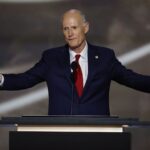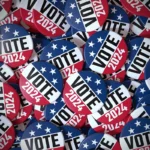
Transitory Inflation is Wishful Thinking
By Robert Zuccaro, CFA, Golden Eagle Strategies
The Federal Reserve Chairman is calling the recent spike in consumer prices “transitory inflation,” but this inflationary spiral may last longer and turn out to be more severe than Fed proclamation. Furthermore, economists have been woefully wrong in underestimating the rise in inflation this year.
Economists Don’t Want to Come Out of Their Comfort Zone
Most people, including economists, do not want to go against consensus thinking and be criticized if they are later proven wrong. In the past three months, economists have illustrated this reality. In looking at the jobs forecast for the month of April, the economic consensus expected a million new jobs, yet the number came in at 266,0000 – off by 74 percent. Just about every economist proffered the same forecast of nearly one million new jobs. The consensus forecast by economists for the CPI for the month of June was an increase of 0.5%, but the monthly report came in at 0.9%. What was not addressed in the June report is that this increase translates into a scary annual inflation rate of 10.8%. However, the story does not end here. The so-called volatile sectors of groceries and fuel costs are reported separately from the CPI. Groceries increased at a 9.6% annual rate while fuel inflation shot up at an 18% annual rate. These so-called volatile items are regularly consumed and should be included in the monthly report given that the also reported twelve-month change for this index smooths out volatility over the longer period.
The Fed’s Wrongful Spin on Inflation.
The Fed has tried to allay public concerns on inflation by claiming that it will taper off in time. Consider a scenario where prices rise 10% over the course of a year. If inflation drops back to a 2% rate later on, consumers will be still stuck with permanently higher prices. Inflation is ongoing and only declines in very severe recessions. Thus, there will be no relief from a higher price level once the rate of inflation tapers off.
The Fed is a Political Arm of the Administration
The Fed has repeatedly issued statements that it will keep interest rates low until 2023. This has little to do with monetary policy, but it has a lot to do in supporting the current administration and Congress which are aiming to spend trillions of dollars more recklessly under the guise “let’s spend now because money is cheap.” The Fed did not anticipate how fast inflation would take hold. By making the statement that they are going to hold the line on interest rates over the next year and a half implies they know how the economy will unfold over during this period when they have been well behind the curve during the past few months. This is irresponsible from any point of view and borders on malfeasance. The Fed Chairman is in a tough spot; he was appointed by Trump and Biden is in the process of wiping away every policy and official associated with Trump. Chairman Powell comes up for reelection in February and the betting is that he will be replaced.
Inflation is Felt Across the Board
Inflation’s impact is being felt across the board. Grains are used in making foods and beverages and also to feed animals; barley is up 76% in price over the past year, corn 71%, and wheat 41%. In addition, poultry prices are up 63% and pork prices 62%. Propane has risen 70% in the past year, natural gas 61% and gasoline 54%. Wholesale prices are also fueling inflation; copper prices are up 35% and steel is up 90% which has put many green energy projects on hold because they are no longer economic. Eventually, higher commodities prices will feed into final demand and show up in the CPI.
Drought Conditions Will Drive Food Prices Even Higher
Economists and government officials suggest that inflation is temporary. Parts of the western United States which contain large areas of farmland are experiencing one of the most severe droughts in decades. The Hoover Dam reservoir, which feeds water to several western states, is at a historic low 35% of capacity. This means higher food prices are already built into the pipeline. Moreover, hydropower produced by the Dam has been curtailed and the shortage will have to be replaced by higher-cost forms of electricity. In the first stage of inflation, companies often absorb higher raw material costs for a while as consumers resist price increases. In the next stage when profit margins are being severely pressured, they are forced to raise prices. We are now in stage two. General Mills, Coca-Cola, Unilever and Kellogg all have announced plans to raise prices, in some cases by high single digits. When second-quarter earnings are released, we anticipate that there will be much commentary on how companies are being forced to raise prices in dealing with rising inflation which is pervasive throughout the economy.
Our Runaway Debt is a Ticking Time Bomb
Our national debt stood at $5 trillion at the end of 2000 and has now mushroomed to nearly $30 trillion. It took 224 years for the United States to amass debt of $5 trillion and just 21 years to grow our national debt by another $25 trillion. This is a very serious matter as Congress is now debating spending another $3.5 trillion to cover child care, free community college, paid family leave, and also to address climate change. Its real cost is closer to $5 trillion because budget gimmicks were used to create the fictitious lower cost.
Here’s the problem – a gigantic one. Federal revenues have been running about $3.5 trillion a year. Current interest costs to service the debt now approximate $402 billion with Treasury paying an average interest rate of 1.4% on total federal debt. Over the past century, T-Bonds have yielded on average 5%. During the early 1980s in a high inflation period, Treasury was paying 17% to borrow long term. Just returning to the norm yield of 5% means that the cost to service the debt would soar to $1.4 trillion a year crowding out Medicaid, Medicare and Social
Security payments. If we revert back to the high inflation levels of the 1980s, the United States will undoubtedly go bankrupt causing a financial calamity.
Conclusion
Inflation is a serious problem and will only get worse before Fed officials decide to take action by raising interest rates to tamp down inflation. The money supply referred to as M2 (banking and savings deposits) has grown at 24% since March 2020, and at the fastest rate since World War II which then led to double-digit inflation. To put money supply growth into perspective, the U.S. economy grows at a norm of 7% per year. Today’s absurd spending by Congress is not helping. The debt problem is being exacerbated by every new spending proposal.
What implications does this have for the stock market? Business is ingenious and most can make adjustments to all types of conditions including high and low interest rates, high and low inflation, a strong and weak dollar, and high and low oil prices. Business will adjust to the new normal and do more with less. One example is Raytheon, the biggest US aero-space supplier, which laid off 21,000 workers amid a drastic decline in air travel induced by the pandemic. Its plans to further automate its factories have been accelerated which means than only 16,000 workers will be called back. Companies across a broad swath on industries are taking similar actions to become more efficient in order to protect profits. There will be casualties in a more challenging environment because some companies will fall by the wayside. This will result in more mergers and acquisitions which should be positive for both the economy and stock market. Assets will be redirected to more efficient areas of the economy giving a boost to overall corporate profits. Working our way through higher inflation could stifle the stock market for a while, but will not hinder its rise to new record highs over the next year or so.
About the Author
Robert Zuccaro is the Founder & CIO of Golden Eagle Strategies. Over the course of his 30+ year investment management career, Robert has managed institutional portfolios, corporate and municipal pension funds, and two mutual funds. He is one of the most successful investment managers having been named a top 10 manager by the Wall Street Journal and Lipper and cited for outstanding performance and track record by leading publications including Financial World, New York Times, and USA Today. Robert began his career at E.W. Axe & Co managing the flagship Axe-Houghton Stock Fund, which outperformed the S&P 500 for six straight years under his management. An early pioneer in the development of quantitative strategies, Robert developed a lifelong passion for identifying the common threads of top performing stocks. Golden Eagle Strategies represents the culmination of four decades of research and expertise honed over the course of 9 bull and 8 bear markets. His research has revealed unconventional truths that drive the performance of the Golden Eagle Growth Strategy. As a prolific researcher, life-long educator and philanthropist, Robert has authored numerous studies, market commentaries, and the book, “How Wall Street Reshaped America’s Destiny”. He holds an MBA from Pace University.















